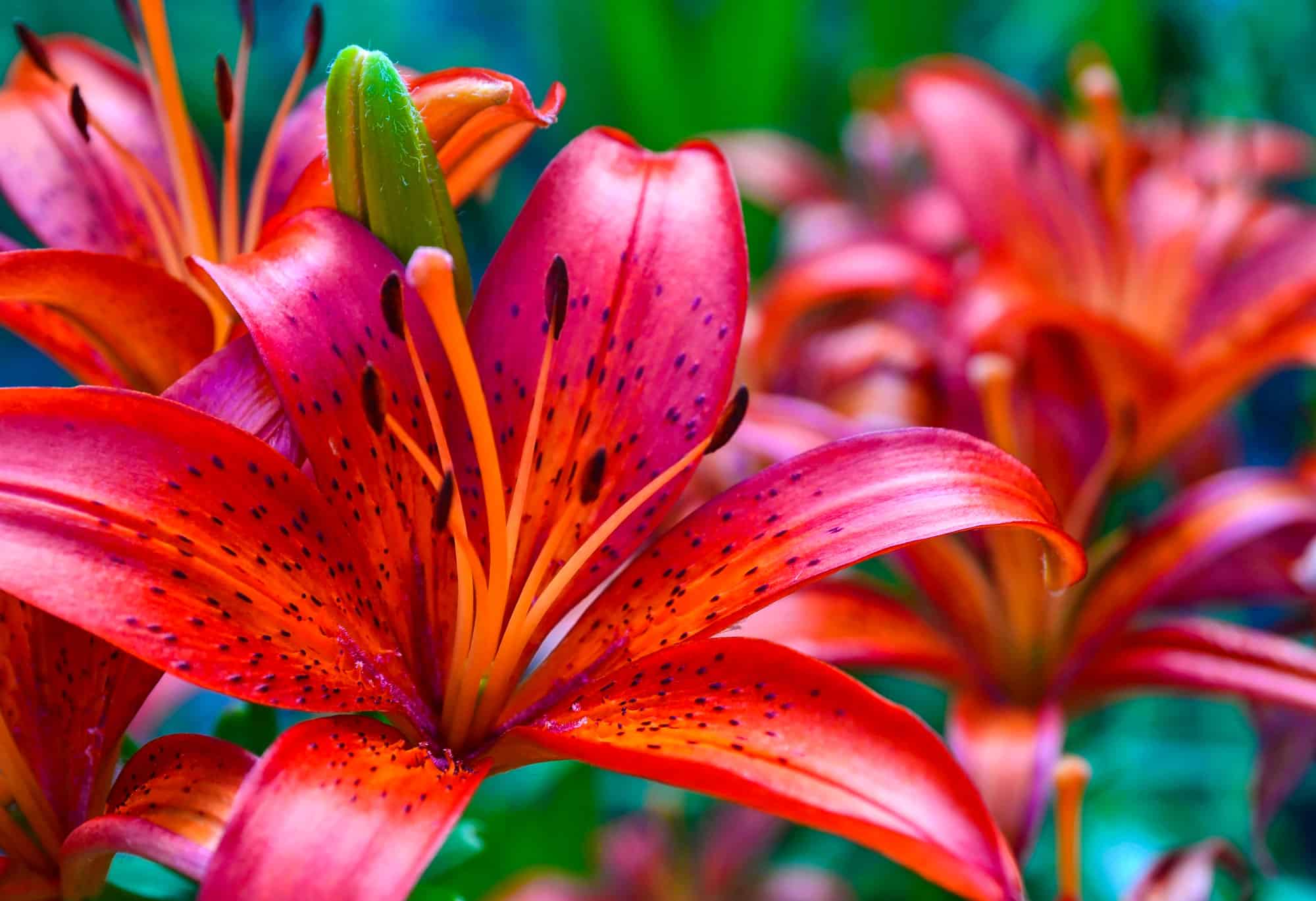With their trumpet-shaped blooms and sweet fragrance, lilies are cherished additions to gardens worldwide. Two of the most popular types are asiatic lilies and tiger lilies But what exactly sets these classic lily varieties apart? This guide explores the key differences between asiatic lilies and tiger lilies to help you choose the best ones for your landscape.
Overview of Asiatic Lilies
Asiatic lilies encompass a broad range of hybrid lilies within the Lilium genus. They earned their name from the region where they originated – central and northeast Asia. However, asiatic lilies now grow abundantly worldwide.
These versatile lilies are prized for their:
-
Vibrant colors – Asiatic lilies display a wide spectrum of colors and bicolors. Popular hues include reds, oranges yellows, whites pinks, and purples.
-
Varied flower forms – Flowers may be trumpet bowl or star shaped. Many have delicate speckles and brush marks.
-
Fragrance – Most have a light, pleasant scent. Some varieties are nearly odorless.
-
Hardiness – Asiatic lilies tolerate cold winters and hot summers. They resist common diseases.
-
Long blooming – Flowers open from early summer to early fall depending on variety.
-
Versatile uses – Great for borders, pots, and cut flower bouquets.
Overview of Tiger Lilies
Known scientifically as Lilium lancifolium or Lilium tigrinum, the tiger lily is distinguishable by its unique speckled flowers. Other key traits include:
-
Fiery blooms – Tiger lily flowers are primarily a vibrant orange-red hue with dark spots on the petals resembling a tiger.
-
Trumpet shape – Large, bowl-shaped flowers face outward on the stem. Petals strongly recurve backward.
-
Subtle scent – The aroma is light and not overpowering.
-
Midsummer blooming – Flowering occurs in July and August.
-
Tall stature – Stems grow quite tall, typically 3 to 5 feet high.
-
Cold hardy – Tolerates cold climates and frosty winters.
-
Self-seeding – Spreads readily by seed dispersal and small bulblets along the stems.
Comparing Asiatic Lilies vs. Tiger Lilies
While asiatic lilies and tiger lilies share a few common traits, some key differences help set them apart:
-
Colors – Asiatics offer every color except true blue, while tiger lilies are primarily orange-red.
-
Patterns – Many asiatics have spots and speckles in contrasting colors. The tiger lily has dark spots on orange petals.
-
Flower shape – Asiatics may have bowl, trumpet, or star-shaped blooms. Tiger lilies have strongly recurved trumpet flowers.
-
Scent – Asiatics tend toward a pleasant, sweet perfume. The tiger lily scent is subtle.
-
Height – Tiger lilies grow quite tall at 3 to 5 feet. Asiatics reach 2 to 4 feet in height on average.
-
Blooming season – Asiatics bloom in early summer while tiger lilies flower in mid to late summer.
-
Hardiness – Both types are cold hardy, but asiatics tend to be more resistant to diseases.
-
Propagation – Asiatics are always grown from bulbs. Tiger lilies also produce small bulblets along the stems.
Choosing Between Asiatic Lilies and Tiger Lilies
When selecting lilies for your garden, consider these key factors:
Color and Patterns
If you want vibrant orange-red flowers, the tiger lily is the clear choice. For diverse colors and speckled patterns, go with asiatic lilies.
Fragrance
Most asiatics have a light, sweet scent. The tiger lily fragrance is less noticeable. Pick asiatics if fragrance is important.
Planting Site
Tiger lilies can spread rapidly and need ample space. Asiatics stay neatly clumped. Tiger lilies work better in wide open areas.
Bloom Season
Extend the lily season by planting early-blooming asiatics with midsummer tiger lilies.
Cut Flowers
Asiatic lilies make better cut flowers as their stems are shorter and sturdier. Tiger lily stems tend to droop in arrangements.
Disease Resistance
Prefer foolproof flowers? Asiatic lilies are less susceptible to viruses and other diseases.
Growing and Caring for Asiatic Lilies and Tiger Lilies
Both asiatic lilies and tiger lilies thrive when given:
-
Full sun to partial shade – At least 6 hours of direct sun is ideal. Light afternoon shade prevents wilting.
-
Rich, well-draining soil – Amend clay soil with compost. Avoid wet, soggy locations.
-
Moderate water – Established lilies are quite drought tolerant but bloom best with 1 inch of water per week.
-
Shelter from wind – Protect plants from strong wind gusts that can damage stems and flowers.
-
Good air circulation – Give lilies adequate spacing and avoid crowding for optimal growth.
-
Timely fertilizer – Use a balanced organic fertilizer or bulb food scratched into soil in early spring.
-
Winter mulch – In cold climates, mulch lily roots after fall frosts for insulation.
Finding the Right Lilies for Your Garden Goals
With their stunning flowers and sweet scent, both asiatic lilies and tiger lilies make showstopping additions to gardens. Pick asiatics for diversity, tiger lilies for drama, or plant both types to enjoy a longer lily season. With proper care, you’ll enjoy their beauty for many years to come.
Asiatic vs Oriental Lilies
FAQ
What is the difference between a lily and an asiatic lily?
What is the difference between an asiatic lily and a daylily?
Do Asiatic lilies come back every year?
Do Asiatic lilies keep blooming all summer?
- The Ultimate Guide to Growing Strawberries in Raised Beds - August 8, 2025
- No-Dig Garden Beds: The Easiest Way to Grow a Beautiful Garden - August 6, 2025
- How to Protect and Preserve Wood for Raised Garden Beds - August 6, 2025

